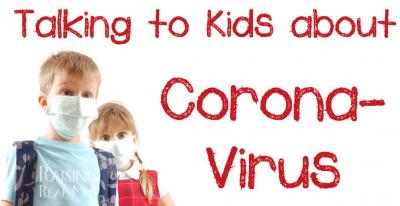How to Talk to Your Kids about COVID-19
How to Talk to Your Kids About COVID-19
Find Out What Your Child Already Knows
Ask questions geared to your child's age level. For older kids, you might ask, "What are you hearing about coronavirus? What questions do you have?" For younger children, you could say, "Do you have questions about the new sickness that's going around?" This gives you a chance to learn how much kids know — and to find out if they're hearing the wrong information.
Follow your child's lead. Some kids may want to spend time talking. But if your kids don't seem interested or don't ask a lot of questions, that's OK.
Make yourself available to listen and to talk.
Make time to talk. Be sure children know they can come to you when they have questions.
Avoid language that might blame others and lead to stigma.
Remember that viruses can make anyone sick, regardless of a person’s race or ethnicity. Avoid making assumptions about who might have COVID-19.
Pay attention to what children see or hear on television, radio, or online.
Consider reducing the amount of screen time focused on COVID-19. Too much information on one topic can lead to anxiety.
Provide information that is honest and accurate.
Give children information that is truthful and appropriate for the age and developmental level of the child.
Talk to children about how some stories on COVID-19 on the Internet and social media may be based on rumors and inaccurate information.
Teach children everyday actions to reduce the spread of germs.
Remind children to stay away from people who are coughing or sneezing or sick.
- Remind them to cough or sneeze into a tissue or their elbow, then throw the tissue into the trash.
Discuss any new actions that may be taken at school to help protect children and school staff.
(e.g., increased handwashing, cancellation of events or activities)
Get children into a handwashing habit.
Teach them to wash their hands with soap and water for at least 20 seconds, especially after blowing their nose, coughing, or sneezing; going to the bathroom; and before eating or preparing food.
If soap and water are not available, teach them to use hand sanitizer. Hand sanitizer should contain at least 60% alcohol. Supervise young children when they use hand sanitizer to prevent swallowing alcohol, especially in schools and child care facilities.


